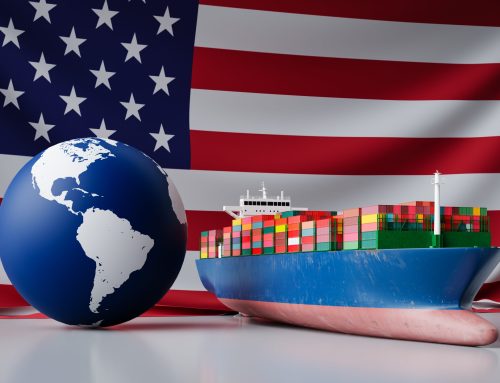Importers sourcing goods internationally must stay vigilant for additional duties beyond normal tariffs. Two of the most significant are Section 301 duties, which target unfair practices by foreign governments, and anti-dumping or countervailing duties meant to level the playing field. Understanding these can save you delays and unexpected costs.
What Are Section 301 Duties?
Under U.S. trade law, the Office of the U.S. Trade Representative can apply retaliatory tariffs in response to trade agreement violations or harmful practices against U.S. commerce. These duties often apply to products with an origin in China and add as much as 25 percent extra to your duty bill.
Section 301 duties apply based on a product’s country of origin, not where it ships from. If the listed HTS subheading is on one of the designated lists, you’ll pay extra. Check if your product’s HTS code is listed using the USTR’s Section 301 database.
Goods eligible for Section 321 de minimis entry (port value under 800 USD) generally do not incur Section 301 duties, though rules may change.
If you import goods subject to Section 301 but eventually export them, you may reclaim those duties via duty drawback.
To understand how these tariffs fit into the wider customs landscape, check out our full guide on the US Import Tariffs and Duties Guide.
What Are Anti-Dumping and Countervailing Duties?
A third-party exporter is considered to be dumping when they sell products in the U.S. at less than fair market value. If investigations find dumping or excessive foreign government subsidies, U.S. authorities impose anti-dumping (AD) or countervailing (CVD) duties to offset that margin.
These duties vary widely. For instance, recent duties include 93.5 percent on Chinese anode-grade graphite, and preliminary rates on items like solar products and plywood.
Commerce and the ITC periodically open new investigations on chemicals, steel, plywood, and other critical sectors. Regularly monitor AD/CVD investigations and updates from Commerce and ITC.
Steps to Protect Your Supply Chain
1. Identify Your Product’s HTS Code
Review your product’s HTS number carefully. If it matches a listed code for Section 301 or AD/CVD, you’ll owe extra duties. A misclassified product may incur heavy costs or exclusion.
2. Check Current Duty Lists
Use USTR and Commerce resources to confirm if your HTS code is under Section 301 or an AD/CVD order.
3. Explore Exclusions or Mitigations
Some importers may qualify for formal 301 exclusions via a petitioning process. Others may benefit from duty drawback or bonded zones. Read our guide on Import Diversification Strategies for US Companies for a better understanding of these exclusions and mitigations.
Section 301 duties are based on origin. Even goods shipped from a third country may still be subject to duty if they were substantially transformed in a covered country.
4. Plan Strategically
To mitigate these duty exposures, consider the following proactive strategies. Importers often respond by shifting sourcing, assembly, or shipping routes to avoid lists when legally possible. Evaluate alternative supply chain options and consider bonded warehousing.
5. Partner with a Customs Broker
A licensed customs broker can verify HS classification, monitor changes to duty lists, assist with exclusions, and prepare duty drawback claims. Understanding the role of a licensed customs broker can be crucial when navigating duties like these, learn more in our guide: What is a Customs Broker and Why Do You Need One?
Real-World Examples Importers Face
- U.S. solar panel firms recently requested AD/CVD duties on imports from India and Southeast Asia, amid accusations that factories there were circumventing Chinese tariffs.
- Hardwood and decorative plywood imports from China, Vietnam, and Indonesia face both AD and CVD investigations.
- Anode-grade graphite imports from China now face a staggering 93.5 percent anti-dumping duty.
These cases highlight how industries from clean energy to construction face evolving duties—often with major cost implications.
Why This Matters to Your Business
Section 301, anti-dumping, and countervailing duties can dramatically increase your cost of import, reduce margins, and delay releases. A recent Deutsche Bank report found that importers are absorbing much of these duty costs—eating into profits rather than passing them to consumers.
Final Tips for Importers
- Confirm if your HTS code appears in any Section 301, AD, or CVD lists.
- Check eligibility for exclusions or drawback programs.
- Source alternative origins if possible and legally compliant.
- Work with brokers to stay informed and compliant.
Start Clearing Smarter with Clearit USA
Clearit USA offers fast, fully digital customs brokerage services for importers across all sectors. From real-time classification checks to compliance support with Section 301 and anti-dumping duties, we simplify the entire customs clearance process online — no paperwork, no in-person meetings, just expert support at your fingertips.
Start your digital clearance now and visit clearitusa.com to get started.





